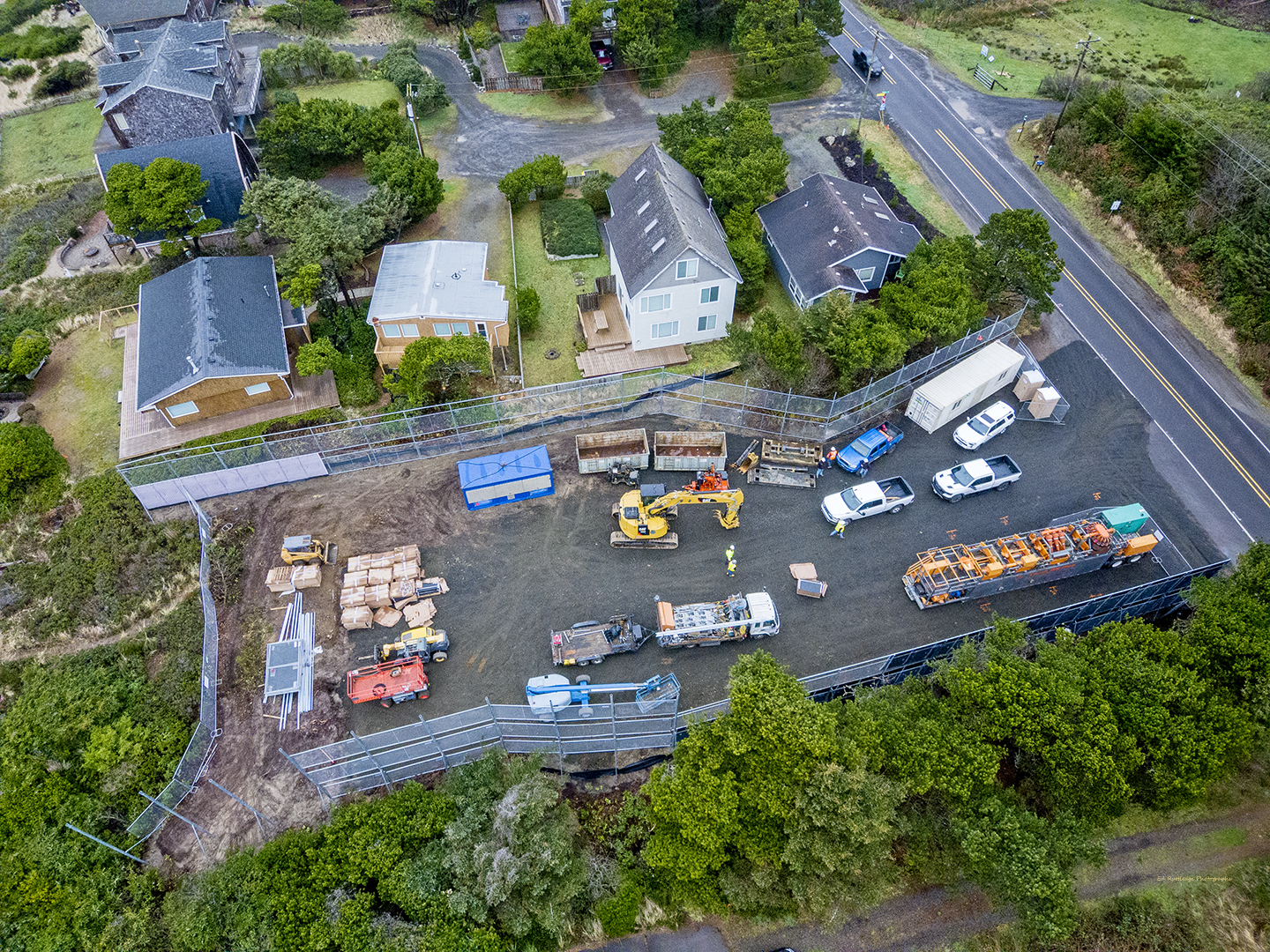By Edmund Ruttledge
In a late Friday email message to community members in Tierra Del Mar, Facebook revealed the, “…HDD rig, mud pump, mud recycling unit and pit pump will be in operation …” over the weekend. Facebook gave less than twenty-four hours of its determination to operate this heavy equipment on
Saturday and Sunday even though the Conditional Use Permit issued by the Tillamook County Commissioners limited construction activities to weekdays. Facebook claims its unilateral action is, ” …allowed in our conditional use permit.” But, the whole issue of when heavy equipment activity could be
operated was addressed by the County Commissioners when it considered the impact of, “… mechanical noise generating activities associated with site preparation, construction and restoration …”
The Facebook drilling project at Tierra Del Mar has experienced multiple failures, the last of which was a full bore fracout occurring on January 25. Facebook carefully refers to the fracout as an “inadvertent release” or an “IR.” The project was universally opposed by the citizens of Tierra Dal Mar and the Oregon Coast Alliance (ORCA) has stated, “… [the] project simply needs to be terminated.”
Nevertheless, the Tillamook County Commissioners continue to permit Facebook to conduct the troubled industrial level drilling operation.
EMAIL sent to Tierra Del Mar community members on Friday Feb. 5th, just before 5 pm, advising of the weekend work:
On 02/05/2021 4:54 PM Jupiter Cable Project
Dear Community Members,
Following up on our note from earlier this week, we wanted to give you a project update, share the Addendum to the Incident Report (which can be found at this link) and answer a few community questions.
Project Update
This weekend (Feb. 6-7) in an effort to minimize the chance of another release of drilling mud, our team will conduct borehole maintenance as allowed in our conditional use permit. To do this, the drilling crew will spin the casing and circulate drilling mud through the bore. The HDD rig, mud pump, mud recycling unit and pit pump will be in operation as part of this borehole maintenance between 10:00am PT and 3:00pm PT on Saturday and Sunday for about 20 minutes per hour. No additional casing will be installed and the pilot bore will not be advanced during these maintenance windows.
We want to emphasize that your safety and the safety of our construction team is of paramount importance to us. As such, please give the workers the space in which to do their jobs safely.
We have compiled and addressed some of the questions we received from community members below.
Kind regards,
Matt, Jupiter Cable project spokesperson
Community Q&A
Q: Why did Edge Cable characterize the chance of inadvertent releases of drilling mud (IR) during the HDD drilling project as highly unlikely during the permitting process, and now identifies IRs as “not uncommon”?
A: We did believe that it was highly unlikely that the horizontal directional drilling (HDD) for this project would cause an IR. During the HDD operation for this project in 2020, the HDD bore passed under the same area of Lot 3200 without incident. We also then completed a supplemental vertical bore survey on Lot 3200 in January 2021 to better gauge the potential for an IR, and the resulting hydro-fracture analysis following the vertical bore survey analysis suggested that an IR was unlikely. Further, our construction vendor for the project, SubCom, has successfully completed 14 offshore HDD bores with a total distance drilled equating to 43,690 ft, and only experienced one other IR during those operations. However, IRs do sometimes occur. For example, there was also a small IR several years ago during the construction of another offshore HDD bore for a subsea cable landing in Oregon. (Facebook was not involved in that project.) The State of Oregon recognizes that IRs are a possibility during HDD operations and requires all HDD permit applications to include plans to address the possibility of an IR. We included our IR response plan as part of our permit applications for this project and have instituted robust mitigation procedures to address the IR on Lot 3200. Those mitigation measures are outlined in the Incident Report and Addendum that we previously sent to the state agencies and Tillamook County.
Q: Why is Edge Cable not using dye in the drilling mud to help identify inadvertent releases?
A: The dye sometimes used in horizontal directional drilling (HDD) projects is called rhodamine dye. Rhodamine dye is a highly soluble chemical added to drilling mud to detect for inadvertent releases (IR) under submerged lands, not upland areas. When used, the dye is added to drilling mud when the HDD drill bit is at a position under submerged land, and an offshore vessel equipped with a team of scientists drops a fluorimeter to the sea floor to detect trace amounts of the dye, which may indicate mud is reaching the ocean floor. The use of dye is not relevant for onshore IRs, as it is only designed to detect dye in the water column. If drilling mud containing rhodamine dye was released onto an onshore surface area, the area would be stained pink by the dye. In nearshore areas like the area off of Tierra Del Mar, rhodamine dye can only be monitored with a vessel located in the surf zone when wave conditions are safe enough to operate a small watercraft. The use of rhodamine dye and offshore monitoring vessels presents a safety risk for watercraft and has not been significantly correlated with the prevention or mitigation of IRs. The use of rhodamine dye has not been adopted by the State of Oregon as a condition to offshore HDD permits and therefore has not been implemented for this project.


.png)